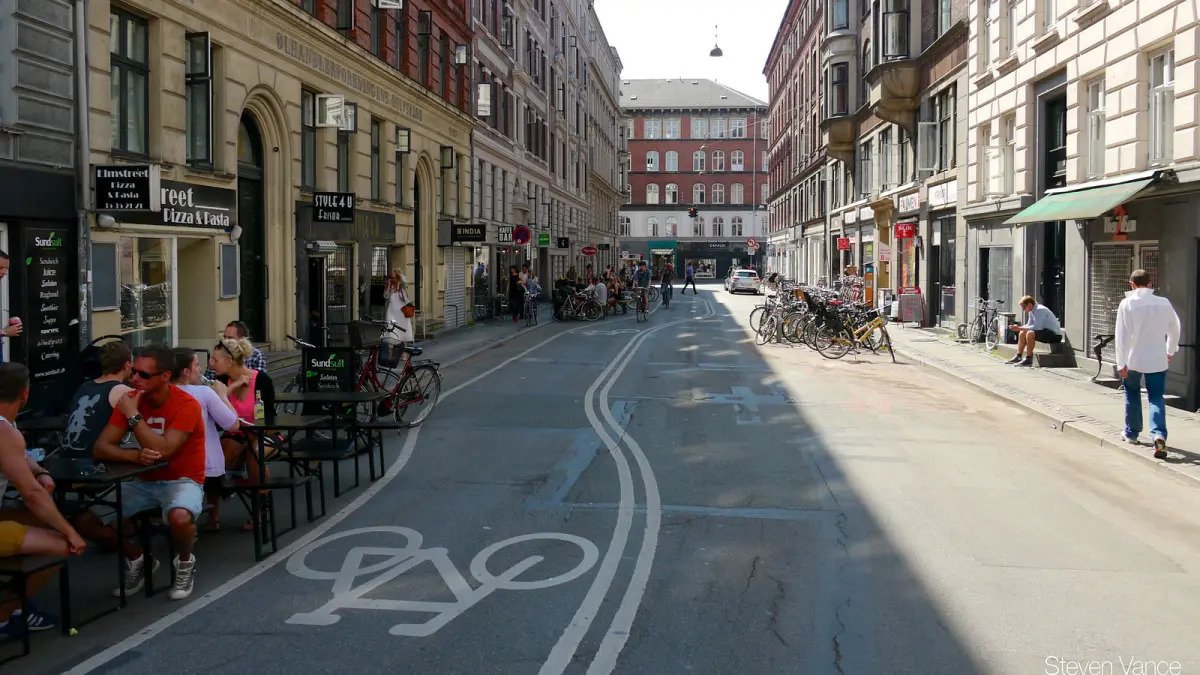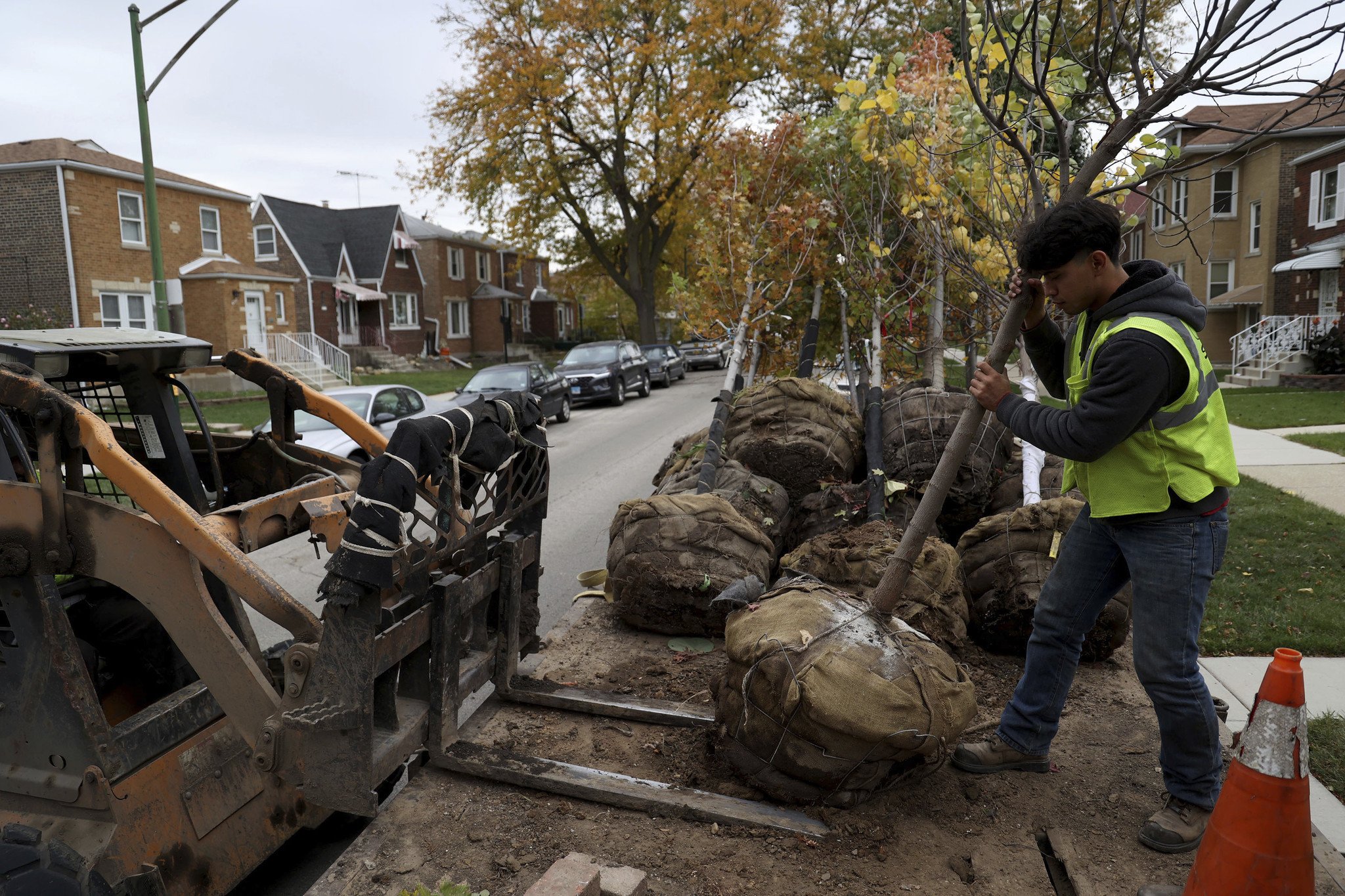Get Excited About Traffic Calming!
Slowing the flow of car traffic keeps streets safe for cyclists, pedestrians AND drivers
We all want to live in safe neighborhoods, but what exactly makes a neighborhood safe? A huge part of it involves designing streets with all road users in mind, not just drivers – doing so makes using streets safer for everyone, including drivers!
Which of these roads seem safer to you?
If you picked street A, you’d be right! But why is that?
It all comes down to something urban planners call traffic calming – The US Department of Transit explains that “Traffic calming consists of physical design and other measures put in place on existing roads to reduce vehicle speeds and improve safety for pedestrians and cyclists.” The keyword here being physical, because let's be honest with ourselves, when was the last time a speed limit sign actually made you slow down?
So what are these physical measures that can be put into place? Well, just to name a few, cities can calm traffic by narrowing lanes, planting vegetation and building pedestrian buffers. In this blog, I’ll dive deep into what makes these three methods great for slowing down traffic, but these are just three of many. If this post makes you want to learn more, keep reading for more resources to learn more about different ways to make traffic safer for everyone.
Narrowing Lane Width
A new study from Johns Hopkins University has found that fewer accidents occur on roads with narrower lanes. One of the key takeaways from the study found that “in the speed class of 30—35 mph, wider lanes not only are not safer, but exhibit significantly higher numbers of crashes than 9-foot lanes, after controlling for geometric and cross-sectional street design characteristics of street sections.”
It’s important to remember that for urban areas in Illinois, the speed limit is 30mph unless posted otherwise, meaning that Chicago city streets fall into the class of streets that could be made safer by narrowing the lanes to 9 feet. However, Chicago municipal code requires that lanes be at least 10 feet wide, which makes sense for major arterial roads that see a high traffic volume. However, we should be doing everything we can to make residential streets safer for pedestrians. This would include narrowing car traffic lanes and widening lanes for bike travel since that same study found that, “Bike lane width, however, is linked to a reduced number of on-intersection crashes ... Bike lanes are considered the most critical countermeasure with the intention to increase safety for bicyclists.”
We live in neighborhoods, not racetracks. Let’s advocate for streets that promote this mentality rather than blindly building for cars.
Plant Street Trees
Another thing that can slow drivers down but seems counterintuitive, is planting more trees along roads. While it’s easy to think of trees as roadside hazards just waiting for a car to crash into them, the reality is that “far less than 1% of U.S. annual vehicle crashes involve a tree on an urban street” In fact, one study even found “a significant decrease in crash rate after landscape improvements were implemented.”
One reason for the improved safety of tree lined streets could be because exposure to vegetation is known to reduce stress. Think about it – driving down a tree-lined boulevard or through a parkway is way more scenic than driving through miles of strip malls punctuated by parking lots. The less stressed out a driver is, the more likely they’ll make smart, safe decisions while driving instead of acting out of road rage.
Another explanation for why streets with landscaping have fewer crashes could be that the presence of trees causes drivers to drive more slowly. Because trees can block vision of the road ahead and can be perceived as hazards in and of themselves, drivers tend to exercise more caution when navigating roads lined with trees. This, in turn, makes neighborhoods with more street vegetation safer for pedestrians & cyclists.
Not to mention the fact that more trees help with removing carbon dioxide from the air, increase biodiversity wherever they’re planted, provide shade in the summertime, improve air quality, and simply make streets look nicer!
Bump-Outs aka Curb Extensions aka Pedestrian Buffers
The Pedestrian Safety Plan published by the Chicago Department of Transportation all the way back in 2013 also calls out sidewalk bump outs as a great method of traffic calming (the whole plan is a great read and highlights a lot more traffic calming methods if you’re interested in reading more on the topic). Sidewalk bump outs can be added to intersections to “reduce the turning speed for vehicles, reduce the distance that pedestrians must cross, improve visibility between motorists and pedestrians, create more space for riders waiting for the bus, and eliminate illegal parking in the corner clearance zone.” – lots of great reasons that make these ideal for traffic calming in neighborhoods!
When advocating for safe streets, it’s important to know what makes streets safe. These are just a few things that can be implemented when thinking about how to redesign roads, but there’s always ways to improve pedestrian & cyclist safety! Next time you’re out & about, see if you can spot any of these traffic calming measures in action.
Learn More About Traffic Calming:
Traffic Calming to Slow Vehicle Speeds | US Department of Transportation
A broad overview of what traffic calming is and its benefits
Narrow Lanes Save Lives | John Hopkins Bloomberg School of Public Health
Recent study into how traffic lane width relates to number of crashes
Safe Streets | Kathleen Wolf, Ph.D
A summary of different studies into the safety impacts of roadside vegetation and street trees.
Landscape improvement impacts on roadside safety in Texas | Jeong-Hun Mok, Harlow C. Landphair, Jody R. Naderi
Study investigating the crash rate before and after landscape improvements in Texas
Chicago Pedestrian Plan, Tools for Safer Streets | Chicago Department of Transportation
Overview of how 16 different types of traffic calming are currently implemented in Chicago and recommendations for how they can be implemented in future road redesign projects







